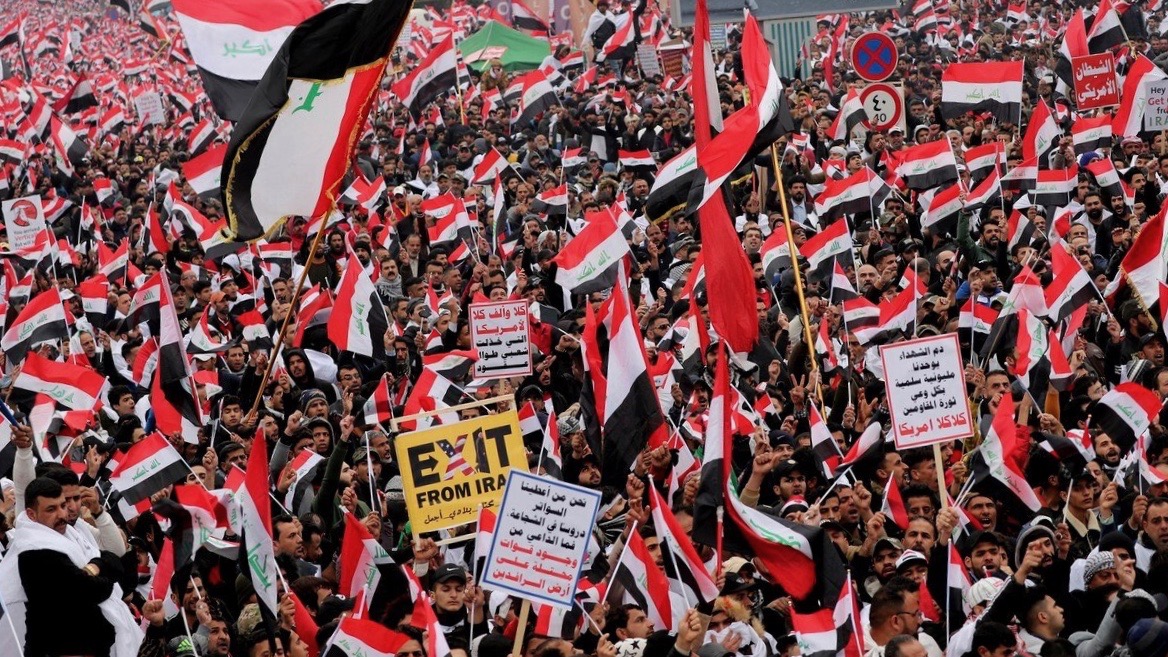The Iraqi government has increased its efforts to get a definite timeline for the withdrawal of US troops from the country. According to various reports in the media, the government led by Mustafa al-Kadhimi wants all foreign troops to leave Iraq before the scheduled national elections in October this year.
On Thursday, Iraqi News Agency, the official news agency of the country, reported that senior officials from the foreign ministry met the US ambassador earlier in the day to “expedite their meeting to implement the outcomes of the third round of strategic dialogue regarding the transition to the new stage of security cooperation and the deployment of combat forces outside Iraq.”
This was part of a series of meetings sought by the technical military committee formed by prime minister al-Kadhimi last week under the command of the army chief of staff, Lieutenant-General Abdul Amir Yarallah, to expedite the process of foreign troops’ withdrawal.
Reflecting on the talks on April 8, Kadhimi had stated in a Twitter post that the Iraqi people “deserve to live in peace, security and prosperity” and not in conflicts and wars.
Foreign troops are a source of trouble in Iraq
The presence of the US forces in the country has become a constant source of trouble due to several militias carrying out missile attacks on an almost daily basis on the premises where these troops are based. On Wednesday, a drone dropped explosives on a base which was hosting US troops in the northern city of Erbil.
Iraqi militias have also carried out attacks on foreign diplomatic missions, including the US embassy located inside the high-security green zone in capital Baghdad, prompting the US to threaten to shut down its mission last year.
Several Iraqi militia men have also died in the retaliatory attacks carried out by the US forces. In February, the US carried out an air strike inside Syria allegedly targeting Iraqi militias responsible for attacks on its forces. Last year, in March, the US carried out an airstrike on Kataib Hezbollah (a part of the Popular Mobilization Forces which fought against ISIS along with the US military), blaming it for the killing of two US and one British soldier in a missile attack near Baghdad.
Assassination of General Soleimani and Muhandis
The US forces were first deployed in Iraq after the invasion and occupation of the country in 2003 and later withdrawn in 2011. They were re-deployed in Iraq in 2014 as part of an international initiative against ISIS. These forces fought along with Iraqi militias to defeat ISIS. However, their continued presence post ISIS’ defeat in 2017 became a rallying point for the opposition in the country. The opposition became stronger following last year’s assassination of General Qaseem Soleimani, the commander of Iranian Revolutionary Guards Corps (IRGC), and Abu Mahdi al-Muhandis, a commander of Iraqi Popular Mobilization Forces, in a US drone attack in Baghdad.
Numerous protests against the presence of foreign troops broke out, along with missile attacks on bases where these forces are located. Iraq termed the drone attack a violation of its sovereignty and the parliament passed a resolution within days of the attack asking foreign forces to move out of the country.
The presence of foreign troops has also become an issue between Iran and Iraq, as the former has vowed to force all foreign troops to withdraw from the region after the killing of Soleimani.
Following the attacks, the US administration of Donald Trump carried out a series of troop redeployments to shift US personnel in the country to “safer bases” in Baghdad and nearby areas, and also announced scaling down their numbers from over 5,000 to 2,500 last year.
The new Joe Biden administration in the US had started negotiations to set a timeline for full withdrawal. After the third round of the talks on April 7, secretary of state Antony Blinken and Iraqi foreign minister Fuad Hussein issued a joint communique stating that, “the mission of US and coalition forces has now transitioned,” “thereby allowing for the redeployment of any remaining combat forces from Iraq.”
The lack of a timeline is speculated to be linked to US apprehensions about the security of foreign missions in Iraq. However, Kadhimi has stated that the Iraqi forces are capable of providing security to all peaceful missions in the country, asserting that Iraqi forces were primarily responsible for the defeat of ISIS. The US also wants the presence of non-combat forces in the country for “training and advisory tasks.” It is yet unclear whether militias opposed to foreign forces’ presence in the country will agree to any such arrangements.





